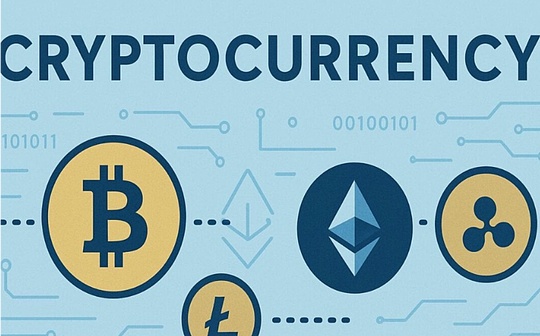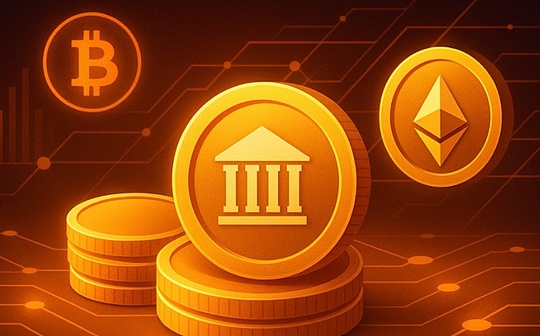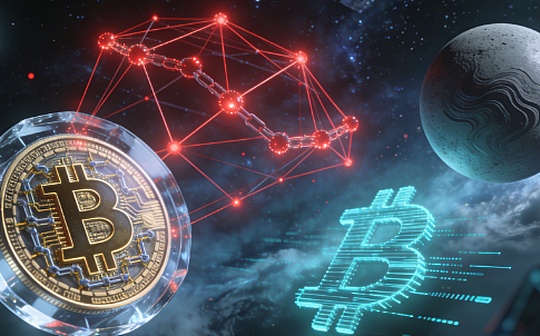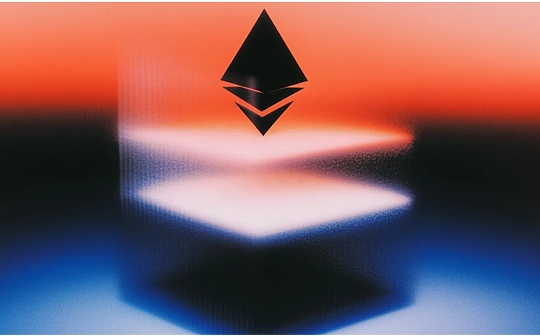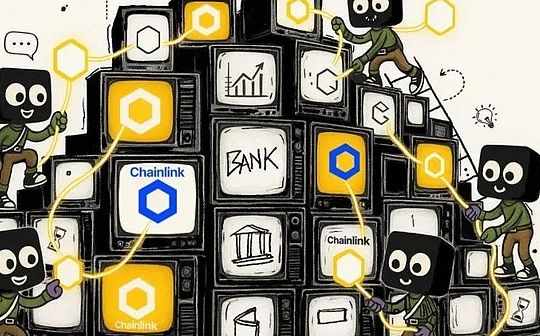
author:Thejaswini, source: Token Dispatch
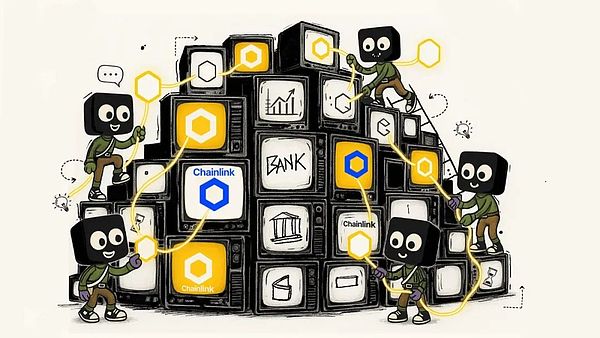
The Dream Team in 1992 crushed their opponents with a huge advantage of 44 points on average in Olympic basketball, but there is a detail in this story that most people don’t remember.
They nearly lost in their first training game with college players.
The problem is not talent.Michael Jordan, Magic Johnson and Larry Bird are on the same team and should theoretically be invincible from day one.But the problem is that superstars don’t automatically form the championship team.You need a system that can transform personal strengths into collective strengths.You need someone to build a bond that takes everyone to the next level.
Dream Team coach Chuck Daly did something that seemed very boring in the first week, far less compelling than highlights of highlight dunks: he established his pass route.He determined the pick-and-roll timing.He created the infrastructure that transformed a group of Hall of Fame players into unstoppable forces.By the time of the Olympics, a miracle happened.Every pass creates better shot opportunities.Every defensive rotation makes the next easier.Each player makes other players more valuable.
Genius lies in creating infrastructure that amplifies everyone’s abilities.
This is basically what Chainlink does in the cryptocurrency space.
Chainlink quietly became Chuck Daley of Digital Finance when other crypto projects tried to become Michael Jordan of blockchain.They built infrastructure that made it easier for others to take action.
In 2019, Chainlink launched its mainnet with a simple goal: import sports scores and weather data into Ethereum so that people can bet on football games without relying on centralized bookmakers.Six years later, JPMorgan Chase used the same infrastructure to settle cross-chain Treasury transactions, and the Fed nodded behind the scenes to acknowledge it.
Chainlink solves the so-called “oracist problem” in the cryptocurrency world. In fact, blockchain is like a digital island that cannot talk or listen to anything.If you want your smart contract to know about Apple’s stock price, or if it rained yesterday in Kansas, or if someone’s bank account really has the dollar they claim to be in, you need something to deliver that information to the blockchain.This thing is an oracle, and Chainlink is the oracle that swallows up all the other oracles.
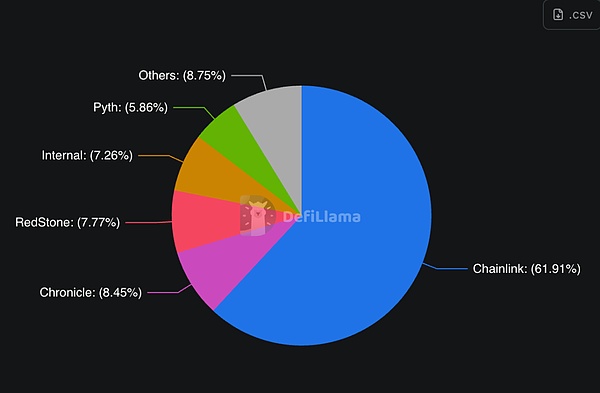
Chainlink has supported more than 60% of the value of decentralized finance (DeFi) and is close to 80% on Ethereum.As traditional assets migrate to the chain, they will need the same infrastructure as DeFi.Chainlink is a market pioneer andStandards that other platforms are being built are following.
Let me explain this infrastructure.
Chainlink was not initially intended to be a bridge between Wall Street and Web3.But at some point, traditional financial institutions realize a problem: If you want to tokenize Treasury bonds, you need a way to prove Treasury bonds do exist and are worth as you say.
So Chainlink’s Proof of Reserve system appeared, which sounds very advanced, but in fact it is just a very complex way to prove that you are not doing a partial reserve scam.
Suddenly, every major stablecoin issuer needs this service because just telling people “Believe us, we absolutely have $100 billion in Treasury bonds” is no longer enough to deal with regulators, especially after the Terra and FTX crisis.
Then, the Cross-chain Interoperability Protocol (CCIP) is introduced, which allows assets to move between different blockchains.It’s like building a universal translator.It helps banks communicate across blockchain barriers.As a result, JPMorgan can now send tokenized deposits from their private Ethereum network to the public Solana network, and Chainlink acts as a trusted messenger.
Chainlink also builds tools specifically to help organizations comply with regulations.
Their new automation compliance engine (ACE) can automatically handle all regulatory paperwork that makes crypto transactions legal.Want to move tokenized assets between blockchains while maintaining anti-money laundering (AML) compliance, understand your customer (KYC) verification and audit trail?Chainlink automatically handles all of this, ensuring that every transaction complies with any regulatory requirements in your jurisdiction.
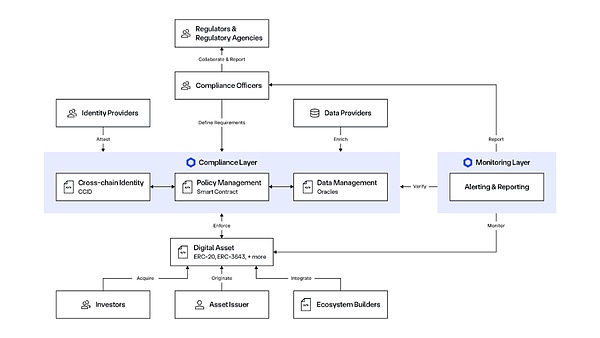
This allows them to perfectly position themselves in the upcoming wave of tokenized finance.Every bank, asset management company and government agency that wants to try blockchain technology first needs to solve compliance issues.
Chainlink’s 2025 story is particularly striking.
Tuttle Capital applied for its first Chainlink ETF (exchange-traded fund) in January, and the Securities and Exchange Commission (SEC) is expected to make a decision in the fall of 2025.The timing is perfectly in line with the current regulatory environment that supports cryptocurrencies.
JPMorgan’s Kinexys used Chainlink to complete the first cross-chain bank settlement between the traditional banking system and the public blockchain.
Intercontinental Exchange, the parent company of the New York Stock Exchange, integrates Chainlink Data Streams to bring Forex and precious metal data to the chain.When the world’s largest stock exchanges needed oracle infrastructure, they chose Chainlink.
Mastercard partnered with Chainlink to enable its 3 billion cardholders to buy cryptocurrencies directly.When payment processors need compliant crypto infrastructure, they chose Chainlink.
Chainlink launches data streams for U.S. stock markets and ETFs to provide real-time price data for stocks such as Apple, Tesla and the S&P 500.
Central banks in Brazil and Hong Kong are using Chainlink to conduct central bank digital currency (CBDC) pilots and cross-chain settlement experiments.When governments needed blockchain infrastructure, they chose Chainlink.
The pattern is consistent: when institutions move from experimental stages to production deployment, they standardize the choice of Chainlink.
The “flywheel” of the vault printing machine is launched
In August, Chainlink announced a plan called “Chainlink Reserves,” which is basically the Chainlink version of the stock buyback program.The company uses fees it receives from corporate clients (JP Morgan, Mastercard, New York Stock Exchange) to purchase LINK tokens on the open market.
Here is how the flywheel works:
first step:Enterprises pay for Chainlink’s data flow, cross-chain services and compliance solutions.Co-founder Sergey Nazarov confirmed that they have generated “hundreds of millions of dollars in revenue”, with the off-chain portion being quite considerable.
Step 2:All payments – whether fiat, stablecoins or other tokens – are automatically converted to LINK through their Payment Abstract system.
Step 3:Some LINK has entered the strategic reserves and has locked up its positions for many years.
Step 4:As more institutions tokenize assets, demand for Chainlink services increases, generating more revenue and more automatic repurchases for LINK.
The beauty of this system is that it links LINK’s needs directly to real-world commercial adoption.Traditional crypto projects rely on speculation or token utility within their ecosystem.
Since launching the reserve program, they have accumulated more than 150,000 LINK tokens worth approximately $4.1 million.This may not seem to be much, but considering the development trajectory.They are moving from pilot projects to simultaneously deploying production in multiple institutions.
Chainlink is evolving from a data provider to what Sergei Nazarov calls a “trading system.”Modern institutional transactions require more than just price data:
-
Data flow: used to accurately determine price and valuation
-
Cross-chain capability: moving assets between different networks
-
Identity and compliance: Meet regulatory requirements
-
Reserve Proof: Verify the Supported Assets
-
Reporting and auditability: Meet the needs of institutional oversight
Chainlink is probably the only provider to offer all of these services in a single integration.When institutions want to tokenize their assets, they can just work with Chainlink instead of pieced together solutions from multiple vendors.
This gives them a unique position in the upcoming wave of tokenization.As Nazarov pointed out in a recent interview, less than 1% of assets worldwide are tokenized.Even reaching 5%, it means that the entire cryptocurrency market will expand 10 times.
The scale of this opportunity is shocking.Traditional finance represents approximately $500 trillion in assets.Chainlink’s argument is that most of these assets will eventually be migrated to the chain, and they all require infrastructure services that Chainlink can provide comprehensively.
The Split of Bitcoin and Tokenization
Sergei Nazarov made a compelling argument about the future development of cryptocurrencies.Bitcoin may capture the demand for hedging in times of instability, potentially reaching trillions of dollars in value.But tokenized assets will surpass Bitcoin on orders of magnitude.
Bitcoin as digital gold, attractsInvestors seeking non-related assets in uncertain times.Tokenized assets are more efficient versions of existing financial products that have been worth millions of dollars.
When sovereign wealth funds and pension funds are allocated to crypto assets, they do not invest 50% in Bitcoin.They will maintain a diversified portfolio that includes stocks, commodities, bonds and real estate—only in tokenized form.The potential market for tokenized assets is the entire traditional financial system.
This shift will fundamentally change our definition of “cryptocurrency.”The crypto space will no longer be defined by cryptocurrencies such as Bitcoin and Ethereum, but by tokenized versions of traditional assets.Chainlink is positioning as an indispensable infrastructure in this transformation.
Supply News
LINK’s circulating supply increased by 44% from 470 million tokens in 2021 to 680 million today, which looks worrying until you understand what these tokens are for.
The dilution of these 210 million tokens funded the most radical infrastructure construction in cryptocurrency history.
Supply expansion is essentially Chainlink’s Series A, B and C rounds, except that instead of handing over the equity to venture capitalists, they fund development by selling tokens.Critics call it dilution, while supporters call it a necessary investment.
According to Tokenomist data, 41% of the total supply of LINK (411.9 million tokens) is still locked, with no planned unlocking events.This suggests that the main dilution phase may have passed, with most historical unlocking occurring during development in 2018-2022.
The strategic reserves launched in August 2025 fundamentally changed this dynamic.
-
41% of tokens are still locked and no plans to unlock
-
Strategic reserves create continuous buying pressure
-
Net effect depends on the balance between enterprise revenue growth and future unlocking decisions
-
Early data accumulation shows that reserves continue to grow
This timing created an interesting turning point.Supply growth fundes infrastructure that generates hundreds of millions of dollars in corporate revenue today.These revenues in turn provide funding for strategic reserves, removing tokens in circulation when institutions adopt accelerated.
The seemingly bearish dilution over the past few years has become the cornerstone of ongoing demand in 2025 and in the future.Investors focused on supply expansion have overlooked the infrastructure being built.Investors who only focus on current buybacks may miss the revenue trajectory that determines the speed of accumulation in the future.
All this begs a problem.
What happens when the infrastructure layer becomes more valuable than the applications running on it?
In 2025, Chainlink’s total value lock-in (TVS) surged to more than $93 billion in decentralized financial protocols, tokenized assets and cross-chain infrastructure.They provide data streams for thousands of DeFi protocols.They are the bridge technology that allows traditional banks to try out public blockchains.They are building compliance tools that decide which crypto applications are legal and which are not.
That $93 billion is not the value of infrastructure – it relies entirely on the application value of Chainlink infrastructure.The infrastructure is Chainlink’s oracle network, data flow and cross-chain message system.
But if Chainlink disappears tomorrow, how many of the $93 billion will become worthless?How many DeFi protocols will stop working?How many tokenized assets will lose their price data?
The answer is: most.This suggests that infrastructure may already be more valuable than applications, even if the market has not yet realized it.
They become systematically important in the crypto space, and this position is rarely achieved by protocols.The network effect is obvious: the more organizations use Chainlink, the more others want to use Chainlink because everyone else is already using Chainlink.
In the cryptocurrency field, the network effect strengthens itself when everyone needs the same underlying service.The more institutions use Chainlink, the more others want to use it, because everyone else is already using Chainlink.Revenue is sticky because the infrastructure continues to receive fees regardless of which applications succeed or fail.DeFi protocols come and go, but the data layer that supports all of these protocols is charged ongoing fees.Applications are commodities, infrastructure is monopoly.And monopoly, we know, tends to capture most of the value in the ecosystem.
Cracks on the foundation
But let’s talk about the issues that may arise, because Chainlink’s bullish argument assumes a lot of things that may not hold forever.
The first problem is that oracle networks are technically difficult to build.But the difficulty lies not in the software, but in getting everyone to agree to use your version.Chainlink’s moat is a network effect and first-mover advantage, not some insurmountable technical barrier.Google and Amazon will be able to build competitive oracle services tomorrow if they want.The same is true for Microsoft.Any large cloud provider with a great engineering team will do.
The second problem is that regulation captures risks.Chainlink becomes so systematic and important.So much so that if it fails, a large part of the tokenized financial system will collapse.This is exactly the “big to failure” situation that makes regulators nervous.What happens if a senator realizes that a private company without government regulation controls the data flow of trillions of tokenized assets?Chainlink may suddenly find itself facing regulatory concerns that can turn profitable businesses into compliance nightmare.
The third problem is the tokenization assumption.Chainlink’s entire value proposition relies on traditional finance for large-scale migration to the chain.But what if not?What if banks decide that their private blockchain is good enough to not need to interact with the public chain?What if the regulatory environment changes, making tokenization harder than easier?Chainlink builds the infrastructure for a future that may not happen.
The fourth problem is the competition from the people they serve.JPMorgan is now using Chainlink, but JPMorgan also has thousands of engineers and billions of dollars in R&D budgets.How long does it take for them to decide to build their own oracle system instead of paying Chainlink forever?This problem also applies to every large bank and asset management company trying to tokenize.
The last question is whether any middleware company can maintain pricing capabilities for the long term.History shows that infrastructure layers tend to be commodified over time.The Internet started with expensive dial-up services and eventually became commercial broadband.Cloud computing started with Amazon’s high-priced charges and eventually became a competition among multiple suppliers on cost.Why are oracle networks different?
Chainlink bets that they can always maintain network effects and convert costs.This is possible, but this bet is often effective until it suddenly fails.
butFor now, this success story looks completely different from the decentralized and de-mediated financial system originally envisioned by cryptocurrencies.Instead, it looks more like an old system with a more refined API.Banks are still banks, regulators are still regulators, and funds are still flowing in institutions that the government can control.
Chainlink does not replace the traditional financial system.They built a translation layer that allows traditional financial systems to “speak blockchain language”.Now, as this translation layer becomes indispensable, it is still unclear whether cryptocurrencies are decentralized finance or simply provide better tools for centralized finance.

